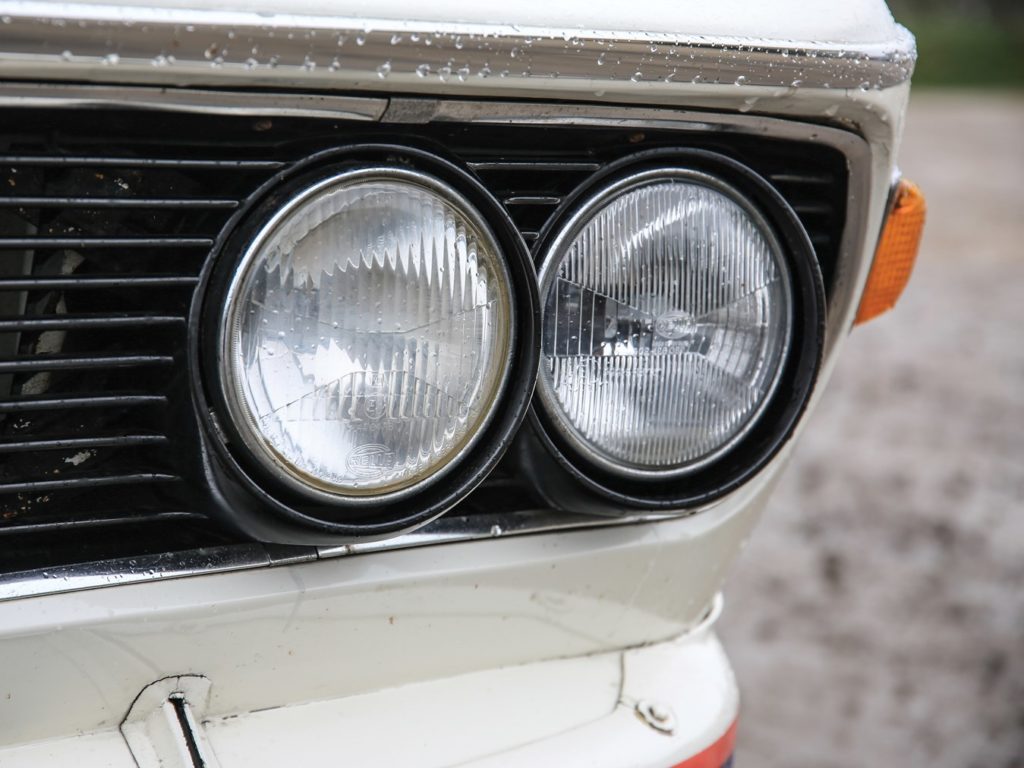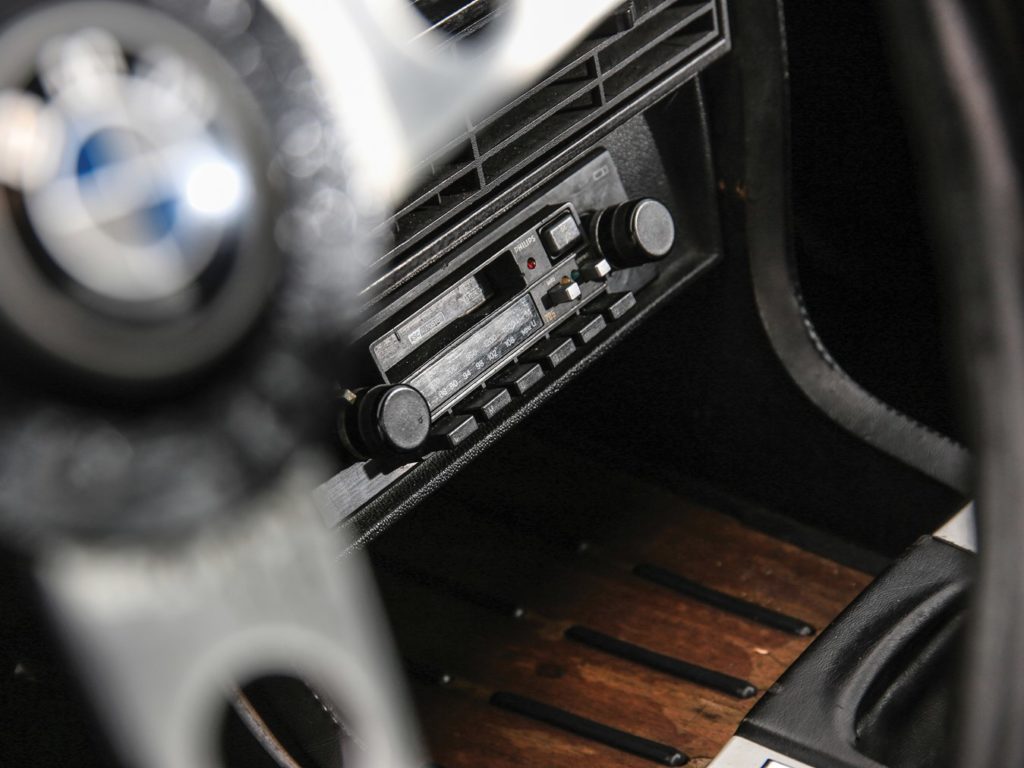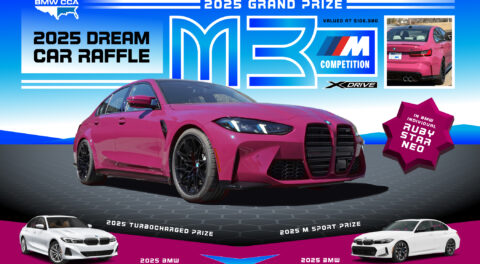On an upcoming Saturday in Monaco, well-heeled bidders will have the chance to own a very special and rare, race-derived BMW. One of just 167 produced and even fewer (110) of the initial series, this 1973 3.0CSL (chassis no. 2275501) wears the factory Batmobile aero treatment, and is further summarized as a highly original low-mileage example. Lightweight modifications, high performance, fuel-injected engine, and other factory changes aside, this specific car also has a rather unique ownership history, and was treated to an extensive service roughly a decade ago.
Source: RM Sotheby’s
Initially purchased by a dealer located in Spain, it’s believed that the car sat around for a few years before being registered to its first private owner of record, Emma Maria Sidler Balmer of San Bartolome de Tirajana, Las Palmas, in July 1975. It’s reported that the car then remained on Gran Canaria for the next ten years, before it was exported by its owner to Hamburg, Germany. The next two decades and change were spent in Germany, when in 2007 it changed hands and was returned to Spain, where it was treated to a complete service in Barcelona. With its current owner since 2013, the listing describes the car as “lovingly preserved” and “overwhelmingly original.”
Chamonix White paint was among factory offerings during the period in which this car was manufactured, and the finish here is believed to be largely original. Photos taken in dreary weather beneath overcast skies make it difficult to fully take in the exterior cosmetics, but we must appreciate the willingness of the owner to let the car be shot in the rain, given the propensity for E9s to rust—starting with the inner fenders. But even with the less-than-optimal conditions, the exterior shows quite well. Karmann body panels appear nice and straight beneath even and consistent paint. Batmobile specifics like the roofline spoiler and front air dam remain in place with expected weathering in view. The rear wing is also present, which was large enough to be illegal for German road use at the time; this meant that a fair number of Batmobiles were delivered with the spoiler stored in the trunk for later installation.
Ride height appears correct for the factory twenty-millimeter lowering springs which were originally paired with Bilstein dampers, and the wheels are the proper Alpina alloy design which should measure fourteen by seven inches.
The L in the model designation sets these lightweight coupes apart from their mass-market stablemates in a few different ways. Reducing the car’s weight was achieved through the use of thinner steel throughout the body, along with the deletion of much of the trim and sound-deadening material. The hood, trunk lid, and doors are all aluminum, and instead of conventional glass, the windows are made from Perspex. But using some of the original equipment was optional, and this car seems to have regular windows.
Crank windows were also part of the stripped-down attitude, and so was the sporty three-spoke steering wheel, which took the place of a wood-rimmed item in the standard cars. Wood trim, carpeting, and other interior creature comforts remain, however, and photos capture the interior as a nice-looking space. The well-preserved condition is also apparent in the form of heavily bolstered front seats with velour inserts that likely do a nice job of holding thinner-framed drivers in place.
Interestingly enough, while most of these cars were never fitted with a radio, this one has an older tape deck situated within the center stack.
 Among the most interesting elements of the 3.0CSL is the engine. Displacing three liters, the M30 twelve-valve SOHC straight six used in the CSL was given a slight bump in displacement from 2,986 cc to 3,003 in 1972, thanks to a larger bore. Initial sub-3.0-liter versions used twin Zenith carburetors, while mid-production variants like this one run Bosch fuel injection, which increased output from 180 horsepower at 6,000 rpm (with 192 pound-feet of torque arriving at 3,200) to 200 horses at 5,500 rpm and 204 pound-feet of torque at 4,300. The four-speed transmission uses the same internal ratios as the road cars, while the final drive is a limited-slip unit with 25% lockup.—Alex Tock
Among the most interesting elements of the 3.0CSL is the engine. Displacing three liters, the M30 twelve-valve SOHC straight six used in the CSL was given a slight bump in displacement from 2,986 cc to 3,003 in 1972, thanks to a larger bore. Initial sub-3.0-liter versions used twin Zenith carburetors, while mid-production variants like this one run Bosch fuel injection, which increased output from 180 horsepower at 6,000 rpm (with 192 pound-feet of torque arriving at 3,200) to 200 horses at 5,500 rpm and 204 pound-feet of torque at 4,300. The four-speed transmission uses the same internal ratios as the road cars, while the final drive is a limited-slip unit with 25% lockup.—Alex Tock
[Photos courtesy of RM Sotheby’s.]


























